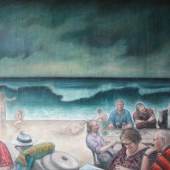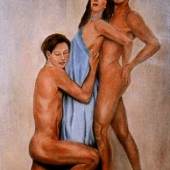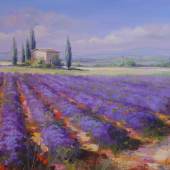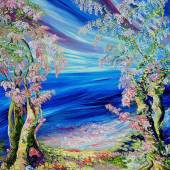Neue Galerie New York
Neue Galerie New York is a museum devoted to early twentieth-century German and Austrian art and design, displayed on two exhibition floors. The second-floor galleries are dedicated to art from Vienna circa 1900, exploring the special relationship that existed then between the fine arts (of Gustav Klimt, Egon Schiele, Oskar Kokoschka, Richard Gerstl, and Alfred Kubin) and the decorative arts (created at the Wiener Werkstätte by such well-known figures as Josef Hoffmann, Koloman Moser, and Dagobert Peche, and by such celebrated architects as Adolf Loos, Joseph Urban, and Otto Wagner).
The third-floor galleries feature German art representing various movements of the early twentieth century: the Blaue Reiter and its circle (Vasily Kandinsky, Paul Klee, August Macke, Franz Marc, Gabriele Münter); the Brücke (Erich Heckel, Ernst Ludwig Kirchner, Hermann Max Pechstein, Karl Schmidt-Rottluff); the Bauhaus (Lyonel Feininger, Paul Klee, László Moholy-Nagy, Oskar Schlemmer); the Neue Sachlichkeit (Otto Dix, George Grosz, Christian Schad); as well as applied arts from the Werkbund (Peter Behrens) and the Bauhaus (Marianne Brandt, Marcel Breuer, Ludwig Mies van der Rohe, Wilhelm Wagenfeld).
Neue Galerie New York was conceived by two men who enjoyed a close friendship over a period of nearly thirty years: art dealer and museum exhibition organizer Serge Sabarsky and businessman, philanthropist, and art collector Ronald S. Lauder. Sabarsky and Lauder shared a passionate commitment to Modern German and Austrian art, and dreamed of opening a museum to showcase the finest examples of this work. After Sabarsky died in 1996, Lauder carried on the vision of creating Neue Galerie New York as a tribute to his friend.
Our museum’s name (which means “new gallery”) has its historical roots in various European institutions, artists’ associations, and commercial galleries, foremost the Neue Galerie in Vienna, founded in 1923 by Otto Kallir. All sought to capture the innovative, modern spirit they discovered and pursued at the turn of the twentieth century. Our institution thus reflects a dual commitment: an embrace of the city in which we are located and a focus on the culture upon which our exhibitions and collections are based. Two of the principal goals of the Neue Galerie New York are to bring a sense of perspective back to Germanic culture of this period, and to make the best of this work available to American and other audiences for both scholarly and aesthetic inquiry.
- << E-FAITH
- zurück | vor
- Hermann Historica >>
Keine Termine in dieser Kategorie vorhanden.
-
23.05.2013 - 02.09.2013First American Museum Retrospective Devoted to Major Viennese Artist and Designer Surveys Entire...
-
20.09.2012 - 07.01.2013Largest-Ever American Exhibition on Swiss Artist to Include Landscapes, Self-Portraits, Symbolist...
-
24.05.2012 - 27.08.2012NEW YORK (March 26, 2012) – Throughout 2012, Austria is celebrating the 150th birthday of...
-
26.04.2012 - 27.08.2012NEW YORK (January, 19 2012)—From April 26 to August 27, 2012, the Neue Galerie New York...
Öffnungszeiten:
Museum Hours
Thursday, Friday, Saturday, Sunday, and Monday
11 a.m. to 6 p.m.
(closed Tuesday and Wednesday)
Admission
General $20
Students and seniors (65 and older) $10









